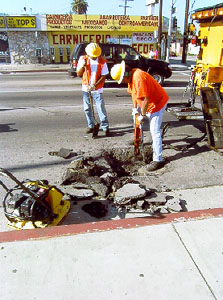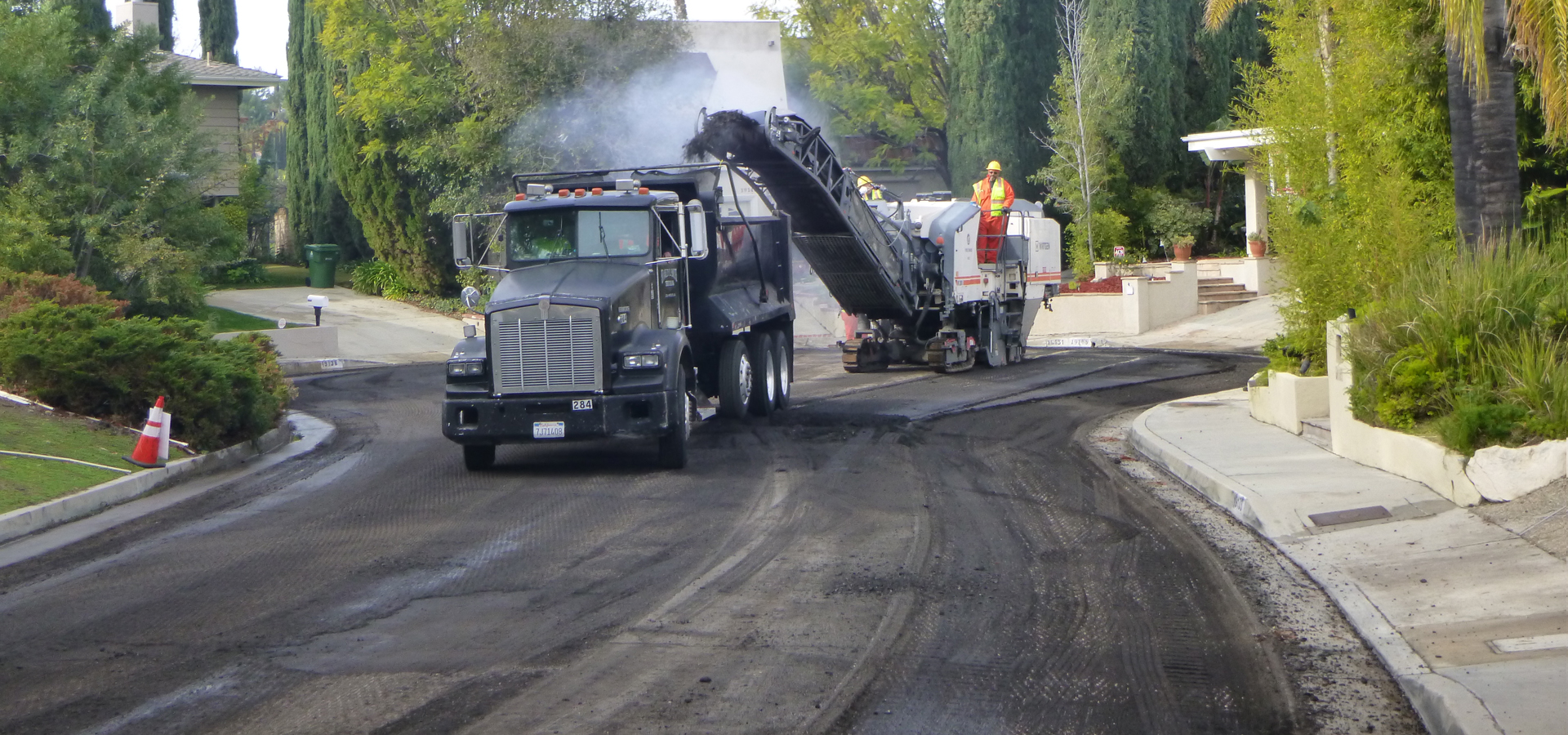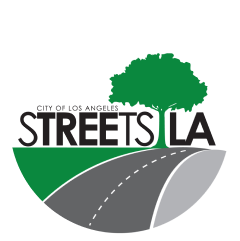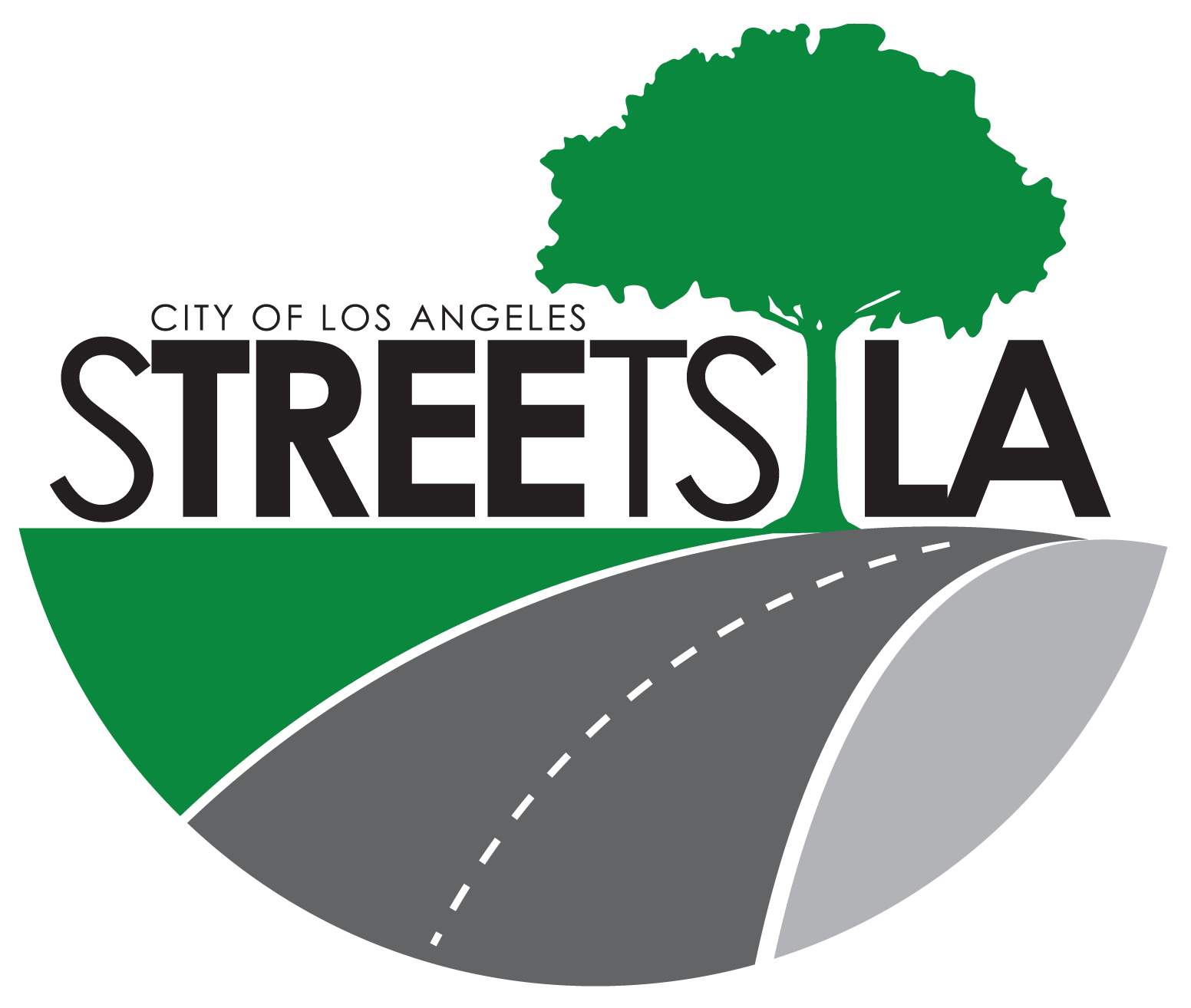One of the bureau's missions is to properly maintain all streets in a perpetual good to excellent condition. Streets in good to excellent condition are characterized as having good riding quality, drainage, and appearance. The total annual maintenance investment is four to five times less following preventative maintenance strategy than if streets were allowed to deteriorate to poor and failed conditions requiring major rehabilitation.
To accomplish this task a variety of minor and major maintenance techniques are employed by the Street Maintenance and Resurfacing Divisions which are responsible for maintenance and repair of 6,500 miles of dedicated public roadways (28,000 lane miles) and 800 miles of alleys (400 miles fully improved and 400 miles unimproved, of which 178 miles are unimproved dirt allies). It performs nearly all resurfacing and reconstruction of residential and major streets and alleys averaging up to 200 miles of resurfacing per year. It also cleans all improved 13,000 curb miles of streets and alleys, the pedestrian subways, tunnels and public walkways. Miscellaneous functions include bridge and stairway repair and bulkhead construction. The bureau's two asphalt plants produce approximately 600,000 tons of asphalt annually.
Area Maintenance Functions - Minor Maintenance
Small Bituminous Repair (Pothole Repair)
Repairing potholes and skin patching alligator cracked areas and ruts up to 50 sq. ft. is performed by a two-person crew. This repair is necessary as an interim measure to extend the roadways serviceability until major maintenance can be scheduled. Skin patching is defined as the manual placement of one inch of asphalt over an alligator cracked or rutted area.
Resurfacing Functions - Major Maintenance
Once a street is paved it comes immediately under attack by a variety of man-made and natural forces. Natural forces break down the asphaltic bond between aggregates by oxidation. The lack of an asphaltic bond between aggregates causes erosion of the fine aggregate particles away from the larger aggregates. This eventually causes surface erosion and allows for percolation of water into the sub grade causing base failures. Automobiles, large trucks, and buses continually flex the asphalt pavement eventually causing cracks permitting larger volumes of water to infiltrate the sub grade causing base failures. Also, buses and trucks generally have axle load ratings that exceed the original design limits of a roadway causing pavement failure. The Bureau employs the following service extending maintenance techniques to neutralize these destructive forces:
Maintenance Blanket
A maintenance blanket is the application, by an asphalt paving machine, of 1" to 1 1/2" asphalt wearing surface to a roadway. Once a roadway has deteriorated to the point of having poor riding and drainage qualities, the application of a maintenance blanket is required. The roadway is prepared for blanketing by profiling or milling to return good rideability. All cracks are sealed, and flow line irregularities are repaired. Once the preparatory work is completed, the asphalt blanket is applied. Maintenance blankets extend the serviceability of a roadway at least 10 years.
Resurfacing
Resurfacing is the placement by paving machine of 2" (plus or minus) of asphalt wearing surface over a prepared sub base. The roadway may have had up to 15% by surface area involved in base failures. Repair of base failures is required and involves removal of all sections of failed asphalt including all saturated sub base and replacement with a granular sub grade and asphalt base. A leveling course of asphalt may be needed to return proper shape to the roadway. Preparatory work may also include profiling, milling, and crack sealing. Resurfacing will, in effect, return a roadway to a new status.
Street Maintenance Section
Provides a wide range of maintenance functions, which include:
- Small asphalt repairs ("potholes")
- Large repairs
- After-hours emergency service
- Small Asphalt Repairs (Pothole Repairs)
There are twenty-four emergency response Small Asphalt Repair (SAR) crews citywide. Each crew works within an assigned district but may be assigned to assist other divisions. Although over 200,000 requests for pothole repair are received annually, not all are potholes. The Bureau's goal is to repair every pothole within the next business day. However, during inclement weather the response time may be impacted. SAR crews will also make asphalt repairs to sidewalk offsets caused by tree roots, slot maintenance holes after they are readjusted following resurfacing operations, and respond to emergencies as they occur.

Large Asphalt Repairs
Large asphalt repair staff repair streets after water main breaks. When permanent water main repairs are completed by the Department of Water and Power, staff will repair the affected roadway.

Emergency Response
All divisions within the Street Maintenance Division respond to emergencies that occur Citywide, 24 hours a day, 7 days a week. Depending upon the nature of the event, crews may be required to work all night or weekends. Management and Supervisory personnel within the section will staff the City's Emergency Operations Center as well as the Bureau of Street Services Emergency Operations Center, 24 hours per day, until the emergency situation is over.
Street Cleaning Section
Provides a wide range of cleaning functions, which include:
- Motor sweeping of streets in commercial, industrial, and residential areas on a daily, weekly, and periodic basis
- Special cleaning before and after parades and special civic events
- Cleaning of pedestrian tunnels and public stairways
- Special daily cleaning of condensed encampment areas within the public right-of-way
- Personal City Services Program
Motor Sweeping
The Bureau has a fleet of motor sweepers that are staffed by authorized full-time Motor Sweeper Operators. Back up sweepers insure that machines are available to replace machines that require repair or are scheduled for routine maintenance. Street Cleaning Operations are performed citywide, depending upon need, by assigning more motor sweepers to various types of scheduled routes.
Motor Sweeping Routes (Restricted Parking Routes - posted)
There are 4,721 curb miles within the restricted (no-parking) route program. Streets are posted with "No Parking" signs that state the day of the week and time of day the street will be swept. The Department of Transportation will issue parking citations enforcing the "No Parking" time restrictions. The routes are designed with a two or three hour time limit. This allows enough time for the sweeper to complete the miles assigned to a specific route, which varies in length. These restricted routes are cleaned on a weekly frequency and average eight to ten miles in length.
Open Routes
These types of routes are not enforced by the Department of Transportation and parking is allowed on the street. There is a total of 8,058 non-posted curb miles divided into routes averaging around 31 miles each. The Bureau's goal is to maintain a four-week frequency on these routes. However, the frequency changes during heavy leaf fall season (October and February).
A.M. Routes
These special routes are motor-swept starting at 3:00 a.m. The routes average about 40 curb miles per route and total 1,538 curb miles citywide. Selected major arterial streets, industrial and commercial areas are included in these types of routes. The early hour start times are necessary to enable the sweeper to pass down the street and have minimal impact on businesses and rush hour traffic commuters.
Special Cleaning
The Bureau performs many other special cleaning operations. A special division daily cleans the highly concentrated encampments located in the downtown area along with the adjacent alleys. Special cleaning operations occur before and after all major and minor special events and the numerous parades that take place citywide all year long. A few of the major special events have included:
- L.A. Olympics
- L.A. Marathon
- L.A. Grand Prix
- Hollywood Christmas Parade
- Democratic National Convention
- Fiesta Broadway


